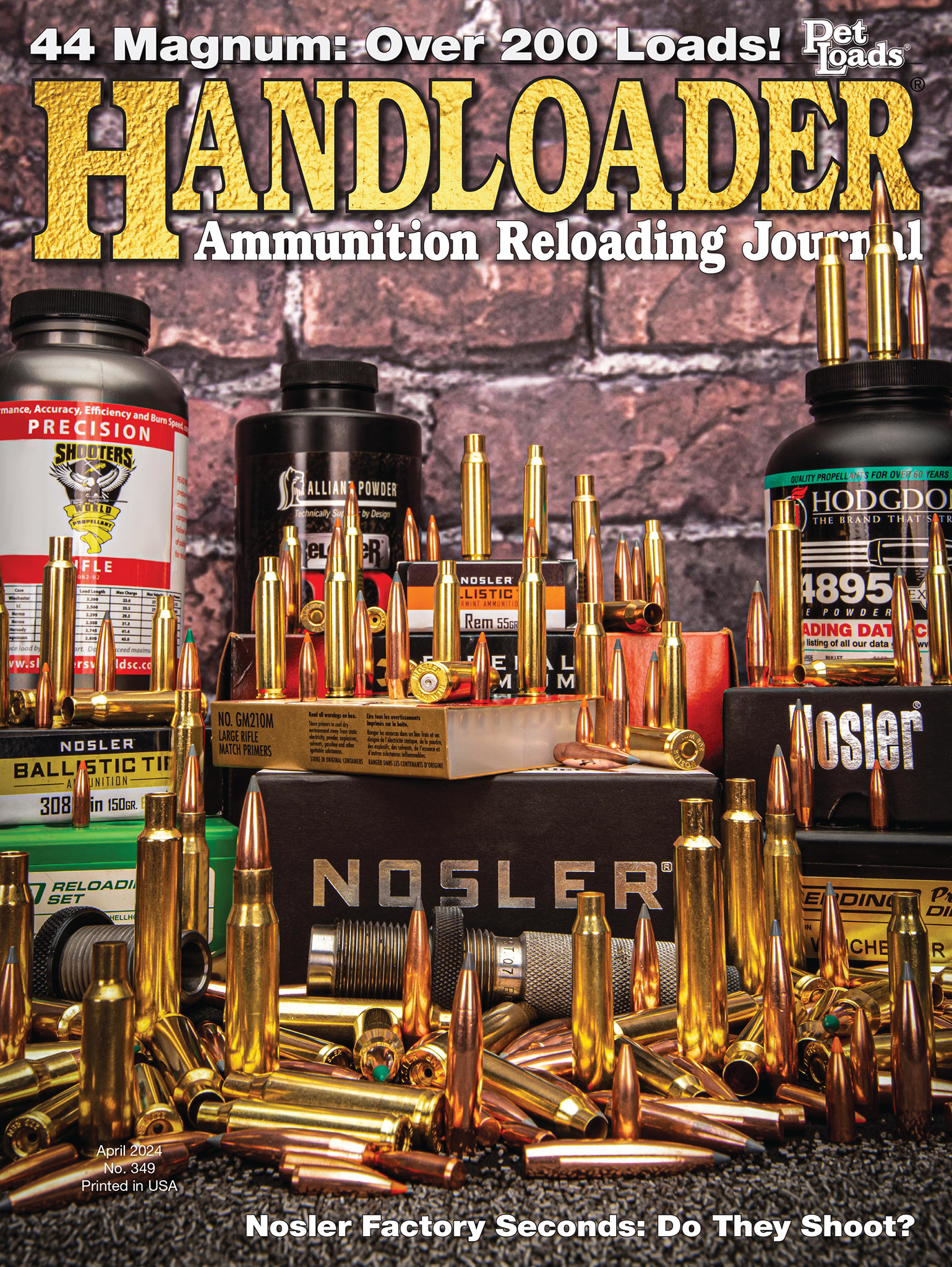Soon after the 8mm Magnum was introduced by Remington in 1977, I necked the case up and down for bullets ranging in diameter from .257 to .458 inch. All gathered dust on the shelf for several years, but eventually rifles were built around several of them. The 7mm Shooting Times Westerner that is more commonly known as the 7mm STW, was introduced in 1988 and it was followed in 1992 by the 358 Shooting Times Alaskan or 358 STA. Then came the 6.5 STW in 1998 and it was followed by the 257 STW in 1999.
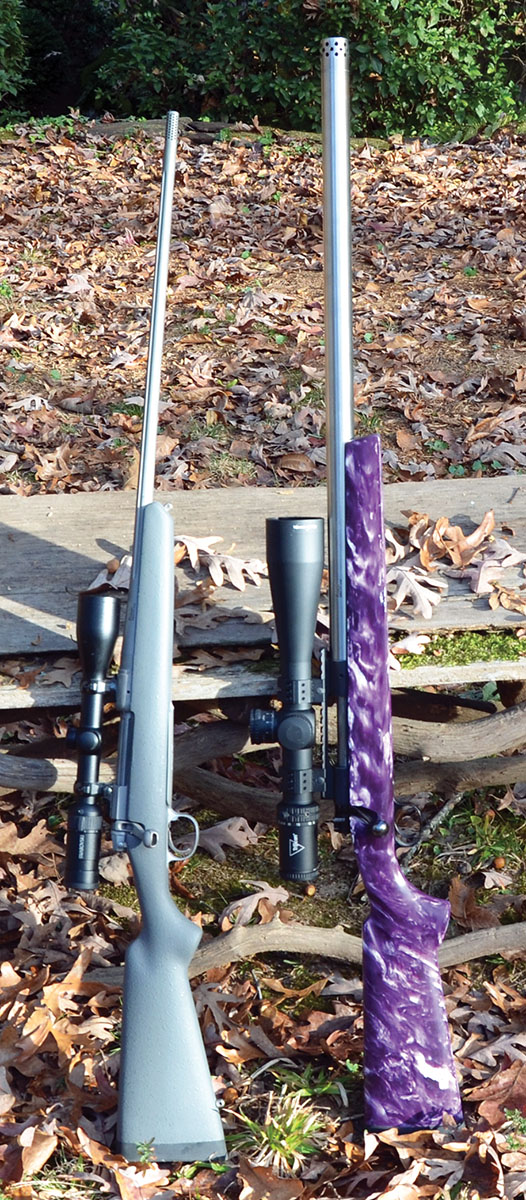
Two of the first 257 STW rifles built by Lex Weberneck of Rifles, Inc. were extremes in opposite directions in weight. The Strata on a lightened and blueprinted Remington 700 action (left) weighs 6 pounds, 10 ounces with scope and mount while the heavy-barrel rifle on a Winchester Model 70 action (right) tips the scale at 21.25 pounds. Both are plenty accurate for their intended purposes.
My original plan was to call it quits at the 6.5 STW, but a reader survey made by the editor of
Shooting Times magazine revealed a surprising amount of interest in a .25-caliber cartridge on the 7mm STW case. The 257 STW can also be formed by necking down 8mm Remington Magnum and 300 H&H Magnum brass, although the latter will require fireforming with a reduced load prior to full-power loading. The first 257 STW die set was made by RCBS and today, Graf & Sons usually has the dies (made by Redding) in stock. Chamber reamers are available from Pacific Tool & Gauge.
It should be noted that the 257 STW is not the first cartridge of its caliber to be created by necking down the full-length Holland & Holland belted case. Several were developed during the 1930s and 1940s by P.O. Ackley, Roy Weatherby, Ralph Waldo Miller and others, and if today’s slow-burn powders had been available back then, they would surely have produced velocities as high as for the 257 STW. But they were not, so Weatherby and the others went on to shorten the H&H case. I have a copy of the first Tomorrow’s Rifles Today catalog published by Roy Weatherby in 1945. At the time, his only cartridges were the 220 Rocket, 257 Wby Magnum, 270 Wby Magnum and 300 Wby Magnum. The only powder used in load data shown for the latter three cartridges was IMR-4350, because at the time, it was the slowest-burning propellant on the commercial market.
Lex Webenick of Rifles, Inc. built the first three 257 STW rifles. Two were on blue-printed Remington Model 700 actions and both have Shilen 26-inch Select Match Grade barrels with 1:10 rifling twist. The barrel of the standard weight rifle has a muzzle diameter of .630 inch and it weighs slightly less than 8 pounds. Its McMillan synthetic stock was described by that company as Remington Sporter Style. No pronghorn antelope or mule deer is safe from that rifle.
The second 257 STW put together by Lex was his ultralight Strata model on a lightened Remington 700 action. He built the Kevlar-reinforced stock in his shop and its extremely thin fluted barrel has a muzzle diameter of .539 inch. Weighing a mere 5 pounds, 6.5 ounces, it is just the ticket for hunting where the mountains are tall, steep and rugged and shots at game can be long. Adding a Swarovski 3-10x 42mm scope in a Redfield two-piece mount increased weight to 6 pounds, 10 ounces. Despite its extremely light weight, the rifle shoots about any bullet inside an inch at 100 yards with some three-shot groups crowding half-minute-of angle.
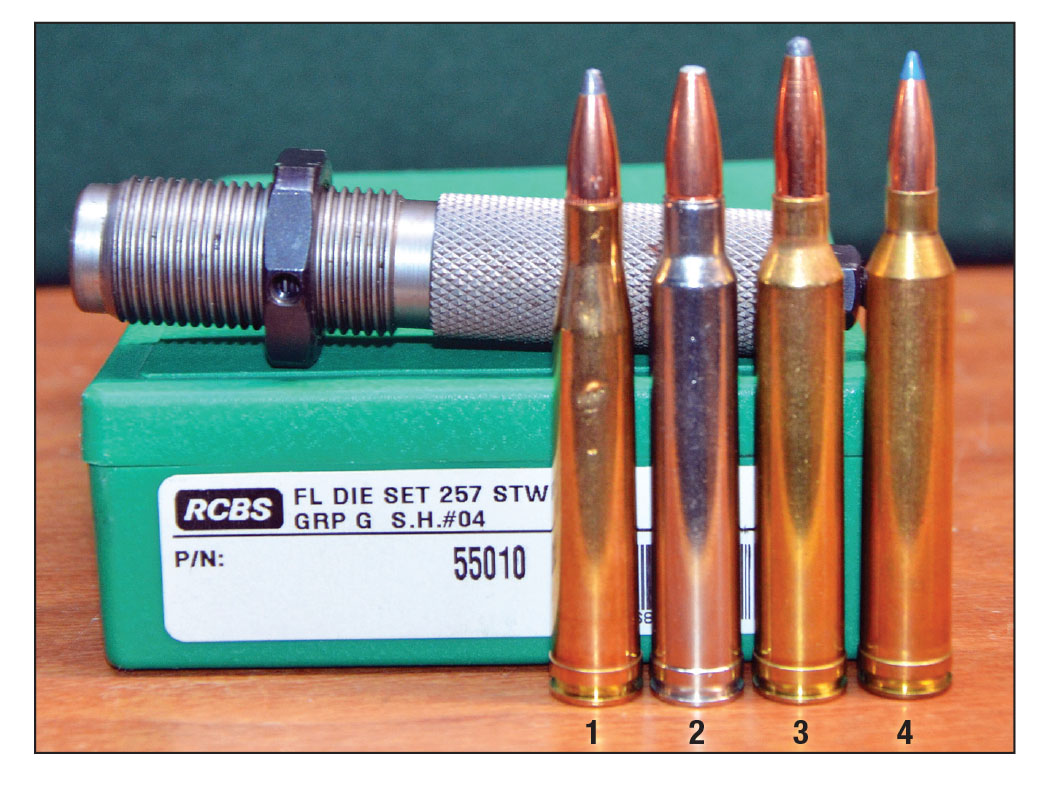
RCBS made the first 257 STW reloading dies in 1997. Die sets made by Redding are usually in stock at Graf & Sons. The case can be formed from any full-length Holland & Holland case but the 8mm Remington Magnum and 7mm STW cases are best because they are simply necked own with no fireforming required. Cartridges from left to right; (1) 300 H&H Magnum, (2) 8mm Remington Magnum, (3) 7mm STW and (4) 257 STW.
Moving to quite a bit more weight is a rifle built by Lex to see just how far away a rockchuck could be center-punched by a Nosler 85-grain Ballistic Tip launched at more than 4,000 feet per second (fps). On a blueprinted Winchester Model 70 action, its Shilen non-tapered, 28-inch barrel has a diameter of 1.255 inches. The wide, flat forearm of its McMillan benchrest-style stock makes the rifle perfectly suited for shooting over a front rest. With a Trijicon 5-50x 56mm scope and Talley Picatinny rail on board, it weighs 21.25 pounds. As to be expected of a top-quality rifle of its weight, it consistently shoots bragging-size groups.
One of the more common questions I have received on the 257 STW through the years has to do with barrel accuracy life. My answer has always been; it depends. As it goes with any high-performance cartridge, beginning the program with a top-quality barrel is important. How the barrel is treated ranks equally high in importance. Limit the number of rounds fired to load development, pre-hunt and during-hunt zero checks and shooting game and most big-game hunters won’t live long enough to wear out a good barrel. Roy Weatherby once told me that of all the rifles in 257 Weatherby Magnum that had been returned because their owners thought their barrels were shot out, not a single one actually was, and a good bore cleaning was all it took to restore accuracy. I take exceptionally good care of all my firearms and the lightweight Webernick rifle in 257 STW is as accurate today as it was when I received it 25 hunting seasons ago. The eight bullets for which I have developed loads have been more than enough.
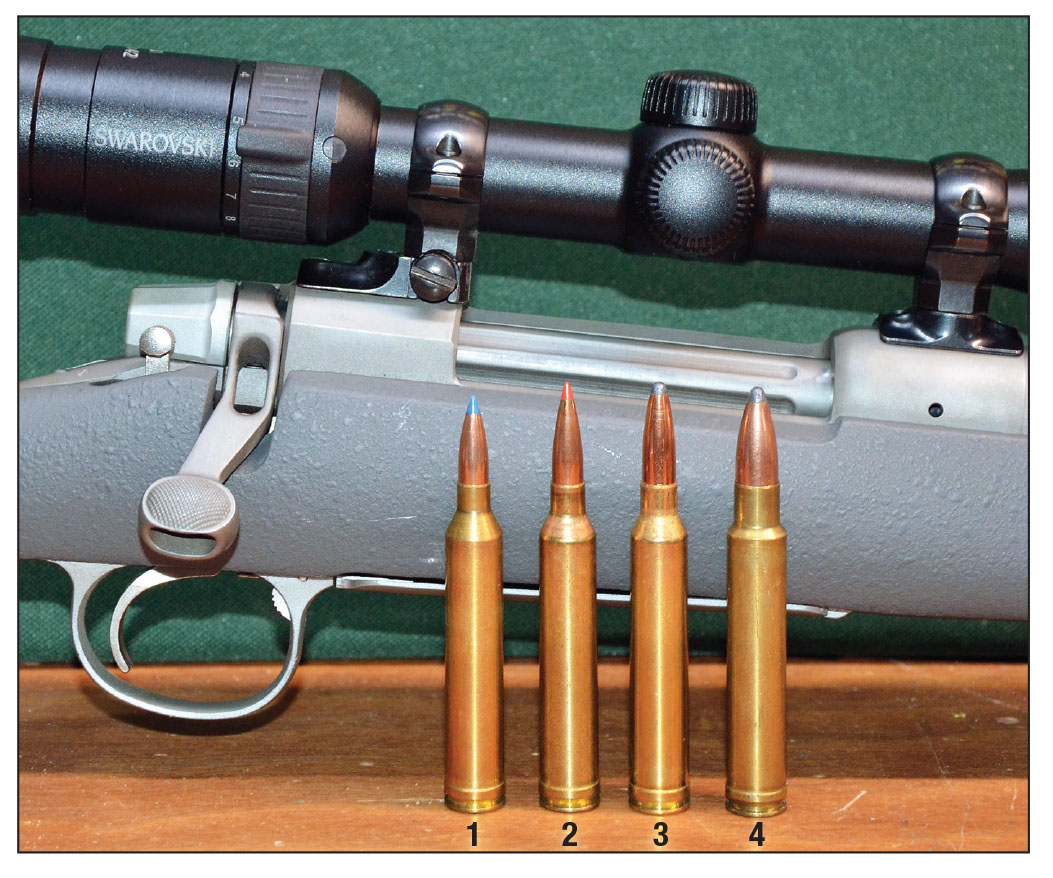
Cartridges originating from the 8mm Remington Magnum case shown here for comparison are: (1) 257 STW, (2) 6.5 STW, (3) 7mm STW and (4) 358 STA.
The 257 STW shoots quite flat out to my self-imposed maximum distance for taking a shot at game under favorable conditions. With the Nosler 100-grain Ballistic Tip exiting the muzzle at 3,800 fps and zeroed 3 inches high at 100 yards, it strikes 3 inches below point of aim at 400 yards. Retained velocity is 2,740 fps for 1,670 foot-pounds of energy. Moving up in bullet weight, the Nosler 115-grain Ballistic Tip at 3,600 fps is down 4 inches at 400 yards where it is still carrying 2,700 fps of velocity and 1,860 foot-pounds of energy. Due to a lower ballistic coefficient, the Nosler 115-grain Partition drops about an inch more at 400 long paces for about 150 foot-pounds less energy at that distance.
Through the years, the Strata rifle built by Lex Webenick has accounted for a variety of game with perhaps its crowning achievement being my second best Coues’ deer in Mexico in 1997. After four days of constant glassing, a Nosler 115-grain Ballistic Tip dropped the buck at a laser-ranged 364 yards.
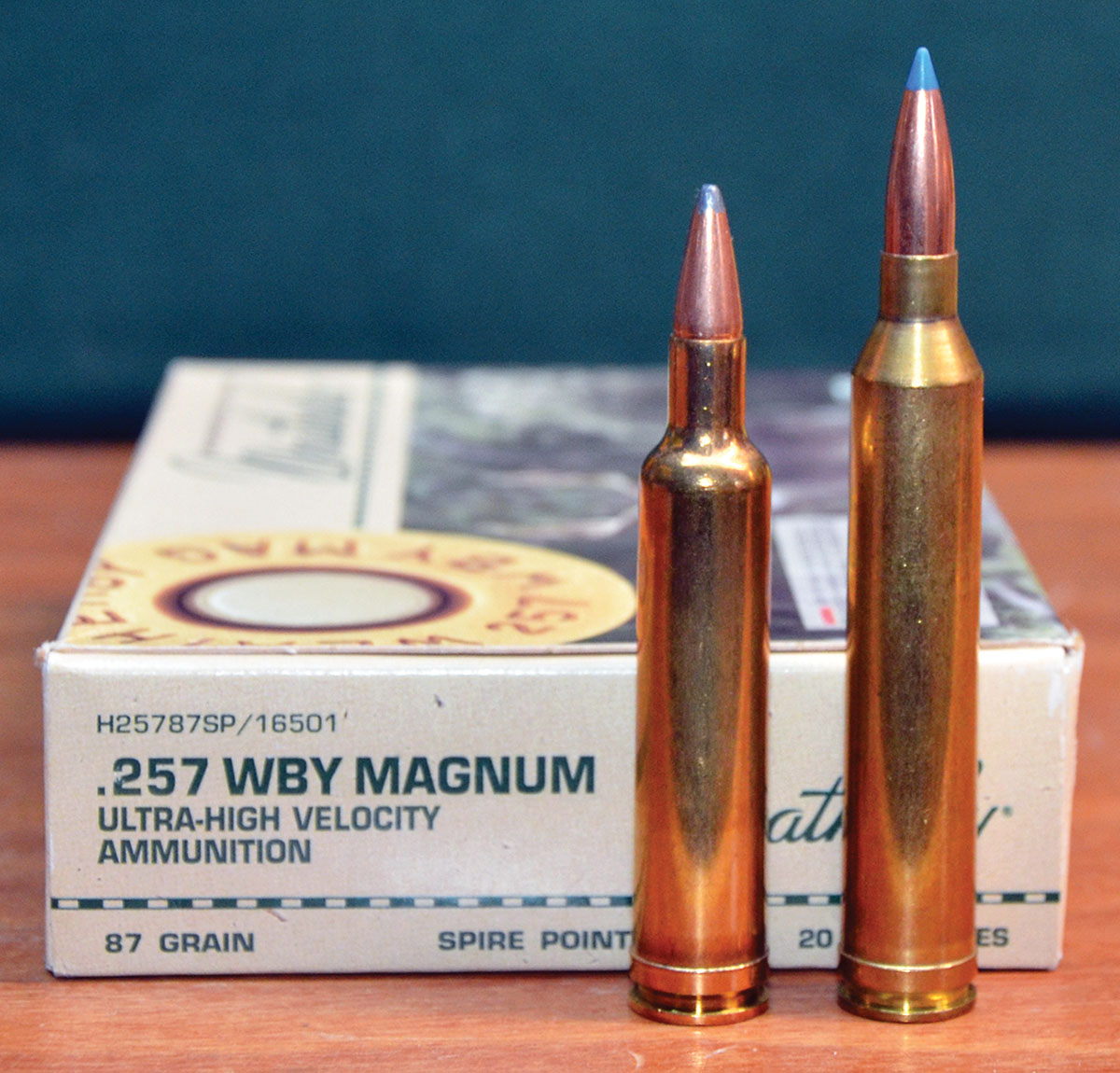
When beginning the development of a 257 Magnum cartridge during the early 1940s, Roy Weatherby first necked down the full-length 300 H&H Magnum case. When it proved to be too capacious for the use of IMR-4350, which was the slowest-burning powder on the market at the time, Weatherby shortened it to just a bit longer than the 30-06 Springfield case.
Possibly the most fun adventure was a non-guided hunt for barren ground caribou in the Northwest Territories (NWT) of Canada. We flew from Alberta to Yellowknife and from there the outfitter’s float plane took us to a semi-permanent camp on the shore of the Great Slave Lake, which at just over 2,000 feet is the deepest lake in North America. The NWT is home to polar bears, black bears and grizzly bears, and while we were a bit too far south to see a great white bruin, a number of grizzlies were spotted. Our small camp was protected by a tall, eight-strand electric fence so we slept soundly at night. There were six of us and we hunted in pairs. The caribou migration had yet to arrive, so during the first two days, not a single animal was spotted. At daybreak on the third morning, I peeped from the tent to be greeted by an amazing sight. For miles in all directions, our camp was totally surrounded by an ocean of antlers on the move. We each took a magnificent bull and the 115-grain Partition fired from my rifle, proved to be quite deadly.
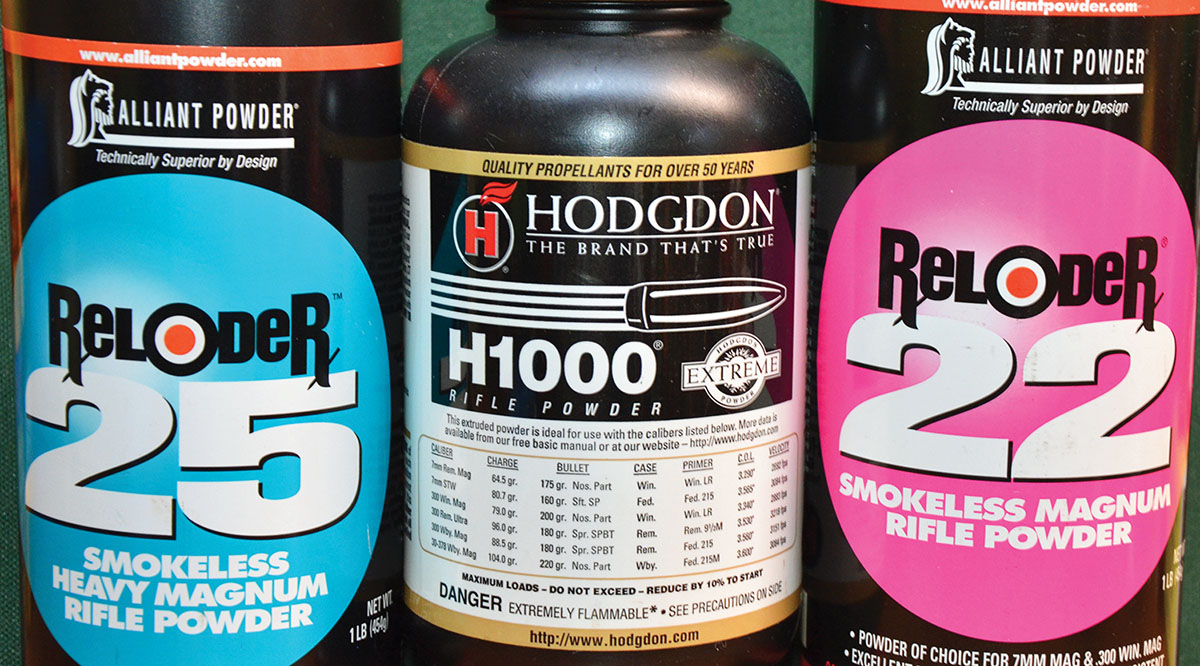
These powders are excellent choices for use in 257 STW handloads.
I suppose there will always be people among us who foolishly begin load development with a maximum powder charge rather than beginning with recommended start charge and letting pressure signs indicate whether charge weight should be increased or decreased. Doing so with an extremely low expansion ratio cartridge such as the 257 STW is asking for trouble. Using a chronograph also helps. My advice is to begin with a start charge and carefully go from there. If velocities for 100- and 115-grain bullets from a 26-inch barrel greatly exceed 3,800 fps and 3,600 fps, respectively, chamber pressure could be too high. Some barrels may show excessive pressure signs prior to reaching those velocities.
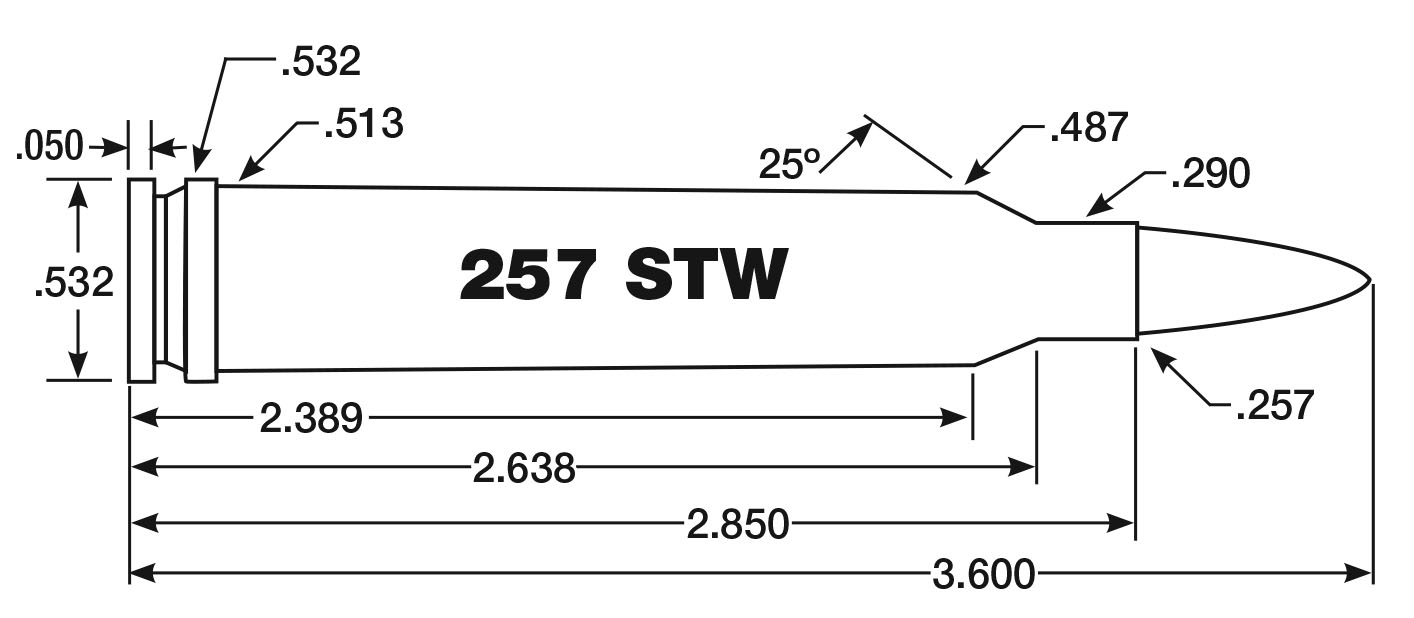





.jpg)


